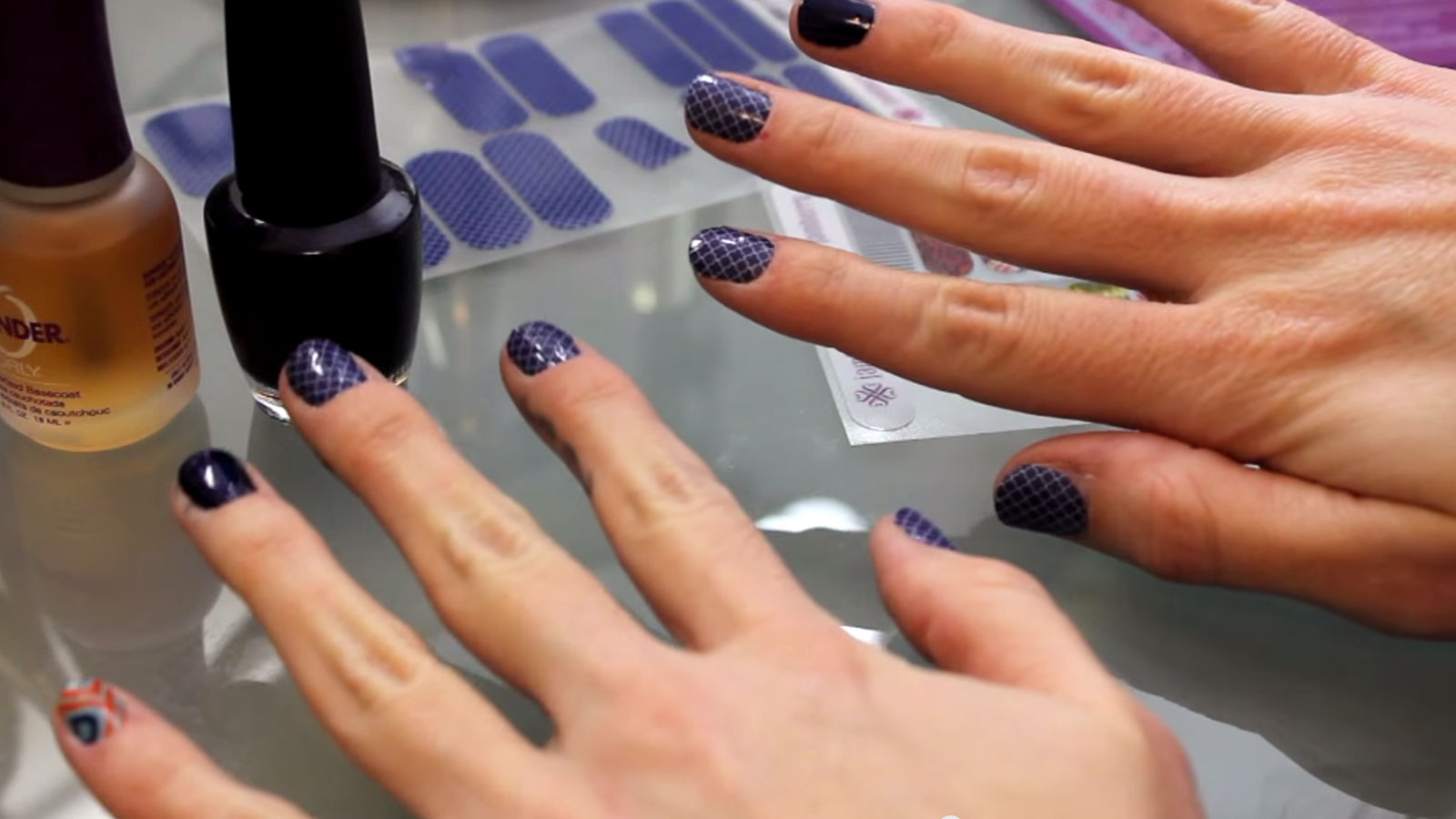Q. Recently, many of my friends have gotten into new-fangled nail wraps. According to their materials, the nail wraps are made from nontoxic vinyl. They are applied by heating up said vinyl and adhering it to one’s finger and toenails. It all sounds lovely, except the nontoxic vinyl part seems too good to be true. Did I miss a memo, is there actual nontoxic vinyl now?
Annie A.
New Haven, CT
A. Dearest Annie,
For years I have wished that au natural fingernails would come into fashion, if for no other reason than the sheer work required to pull off a stylish manicure. I mean, the painting, the filing, the cuticle-pushing, the touch-ups … And that length thing: Why have we decided, as a society, that being a beautiful woman means having talons that inhibit your ability to grasp simple tools? I’ve never had the time for it, honestly, and I like being able to zip up my pants.
The above reasons are enough for me to keep my nails no-nonsense naked and short. But there are other, more serious issues with nail fashion in all its forms. We’ve already talked about how most nail polish contains harmful chemicals, which can be dangerous for both workers and clients in nail salons. Might vinyl nail wraps be a better alternative? The brightly colored nail decorations you reference are indeed made from polyvinyl chloride, or PVC. Annie, your alarm bells went off when you heard “nontoxic vinyl,” and rightly so: There’s still no such thing. I’ve said it before, and I’ll say it again: No on vinyl, and that’s final!
When we talk about something being toxic or nontoxic, we usually mean that in a very personal sense — is this product hazardous to me and my family? Does it pose some direct risk to use? So let’s look at that first. PVC alone is a hard plastic and requires the addition of additional plasticizers, usually the dreaded phthalates, to become flexible. In fact, unless soft PVC products are marked otherwise, you can assume phthalates are involved.
When I asked a representative for one of the more popular nail wrap companies, Jamberry, about this, she declined to say whether or not phthalates were a part of the potion. She did write of the wraps, “They are not hazardous and they are completely safe to use for their intended purpose. Jamberry nail wraps share the same core plastic/vinyl compound found in many everyday items including credit cards, bibs, shower curtains, mattress covers, faux leather, etc.” We do know, however, that phthalates may be found in all of the above.
We care about this because animal tests suggest that phthalates are endocrine disruptors in us humans, messing with reproduction and development. As to whether or how much of the stuff migrates from your nails into your body — the short answer is, I don’t know. We need more research on the stuff, frankly. I can tell you that phthalate exposure can happen through everything from using certain kinds of shampoo and moisturizer to eating food wrapped in plastic to breathing the air in a room that has vinyl flooring or blinds. Some hospitals are phasing PVC out of medical supplies, and certain types are banned in kids’ toys. Knowing this, how do you feel about voluntarily keeping the chemical right at your fingertips?
It’s possible that phthalate exposure is small or nonexistent from nail wraps, but I’d still nix them, Annie. There’s another kind of toxic to think about: toxic not just to ourselves, but to the environment as a whole. And here, PVC gets a clear fail: The nasty plastic emits dioxins during production and when burned, which are known carcinogens also linked to liver damage and a number of nervous system issues. Industrial dioxins spread and build up in the soil, the fatty tissue of animals, and yes, in us. So the best reason to eschew vinyl is to try to limit widespread pollution that affects all of us, not just those with glitter-striped nails.
If you must decorate the tips of your fingers and toes — of course, I understand that not everyone shares my preference for a clip-and-go hand beauty routine — then I’d point you to the trusty Environmental Working Group’s cosmetics database for less-toxic nail polishes. Also, be on the lookout for brands that advertise themselves as 5 Free, or free of toluene, dibutyl phthalate (DBP), formaldehyde, formaldehyde resin, and camphor (some of the worst offenders as far as polish chemicals go).
And consider leaving your nails natural most of the time (and I don’t mean the kind of “natural” that requires a fancy manicure). One of these days, I just know it’s going to be hot.
Keratinly,
Umbra



